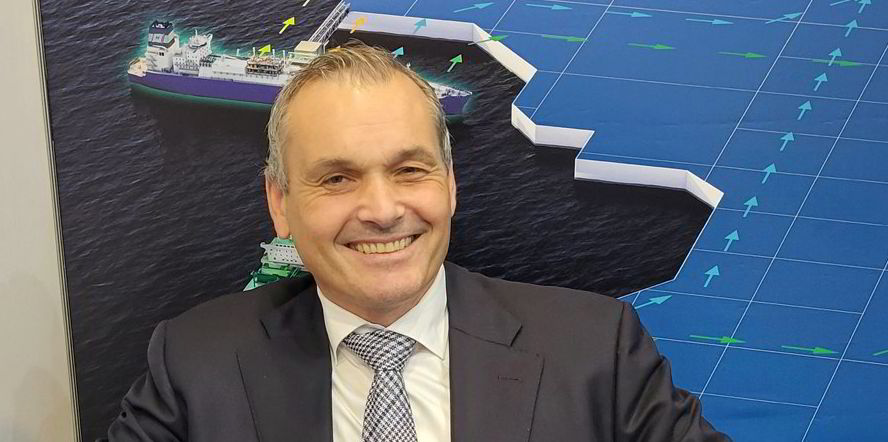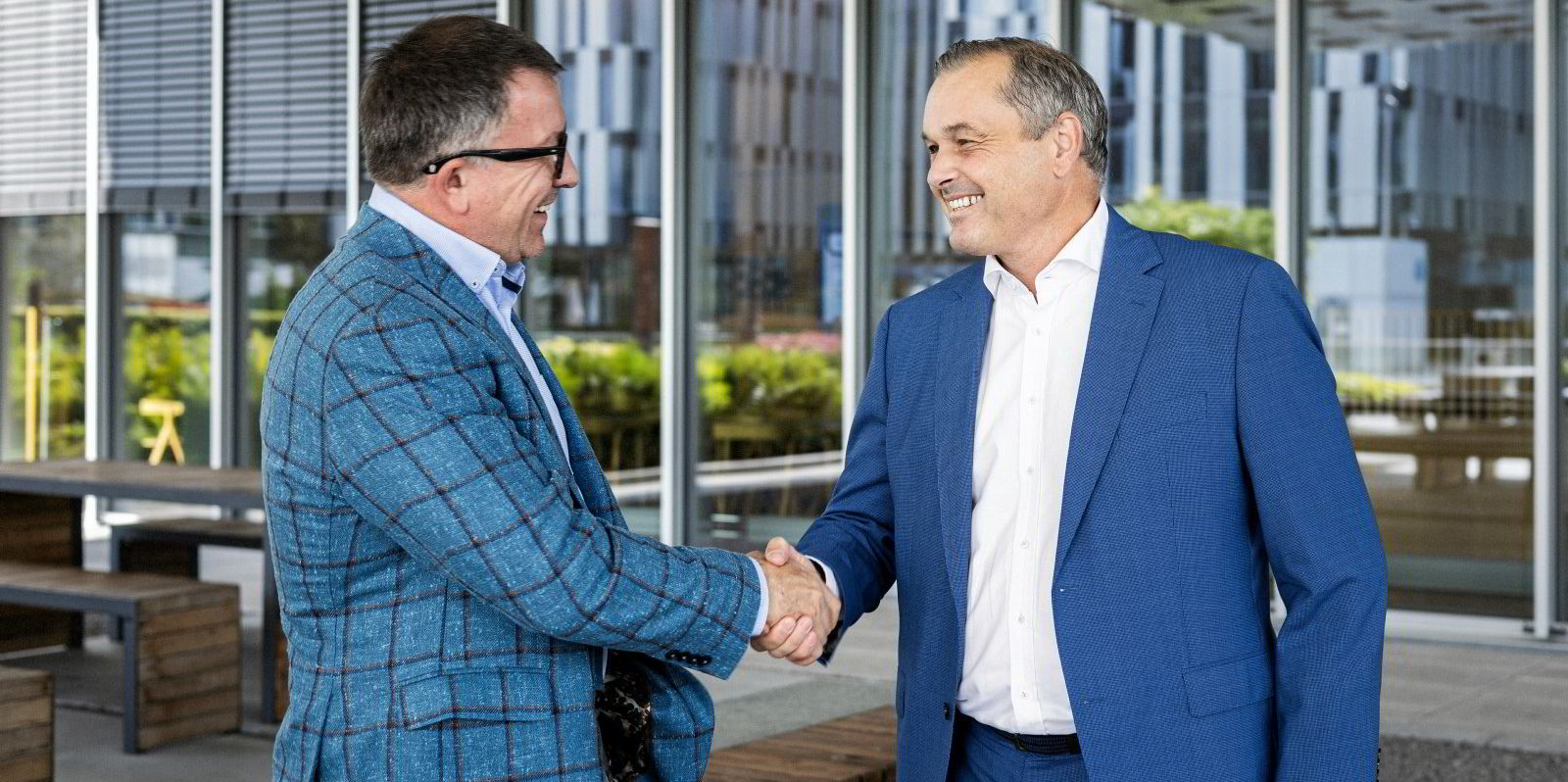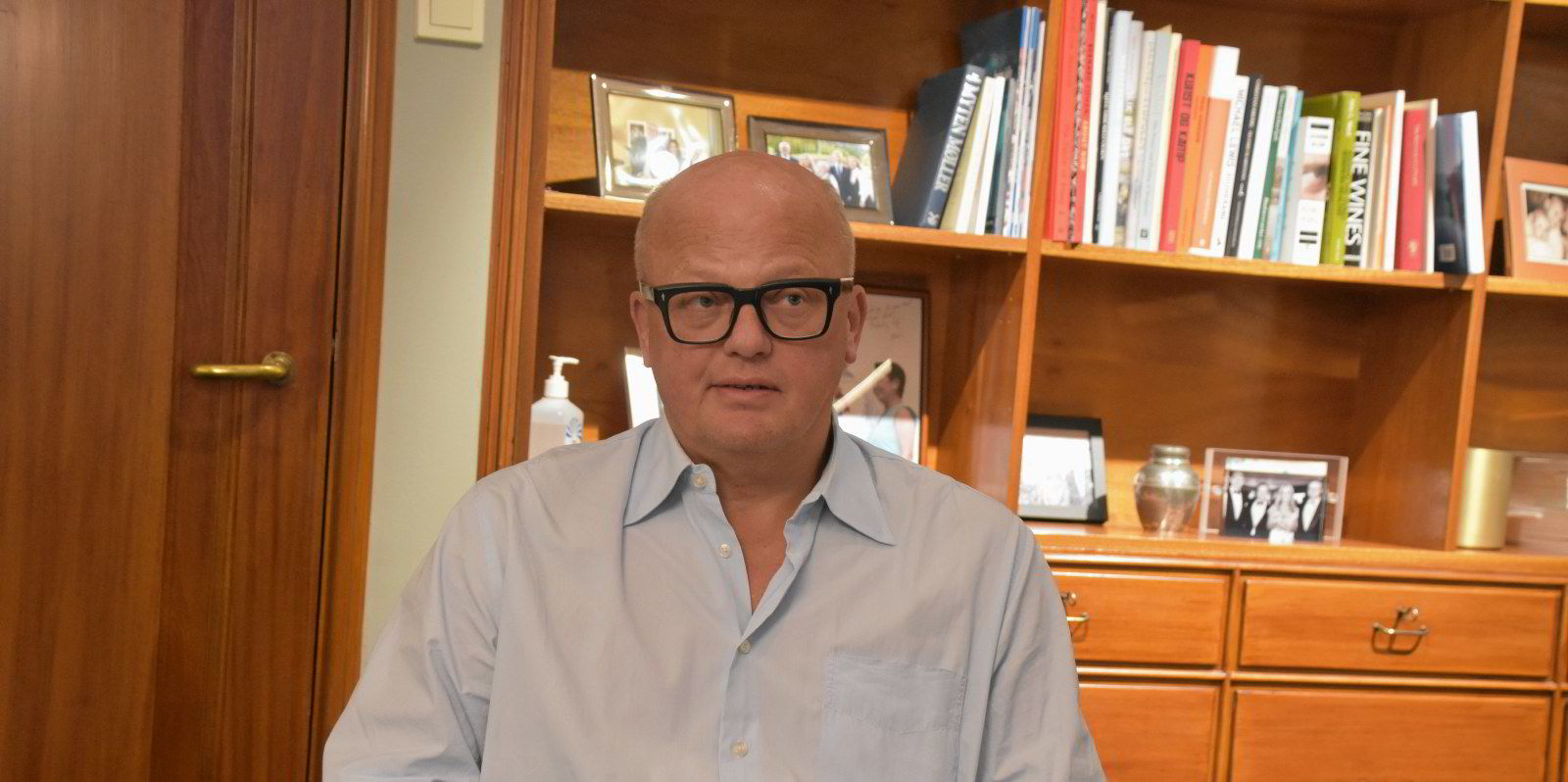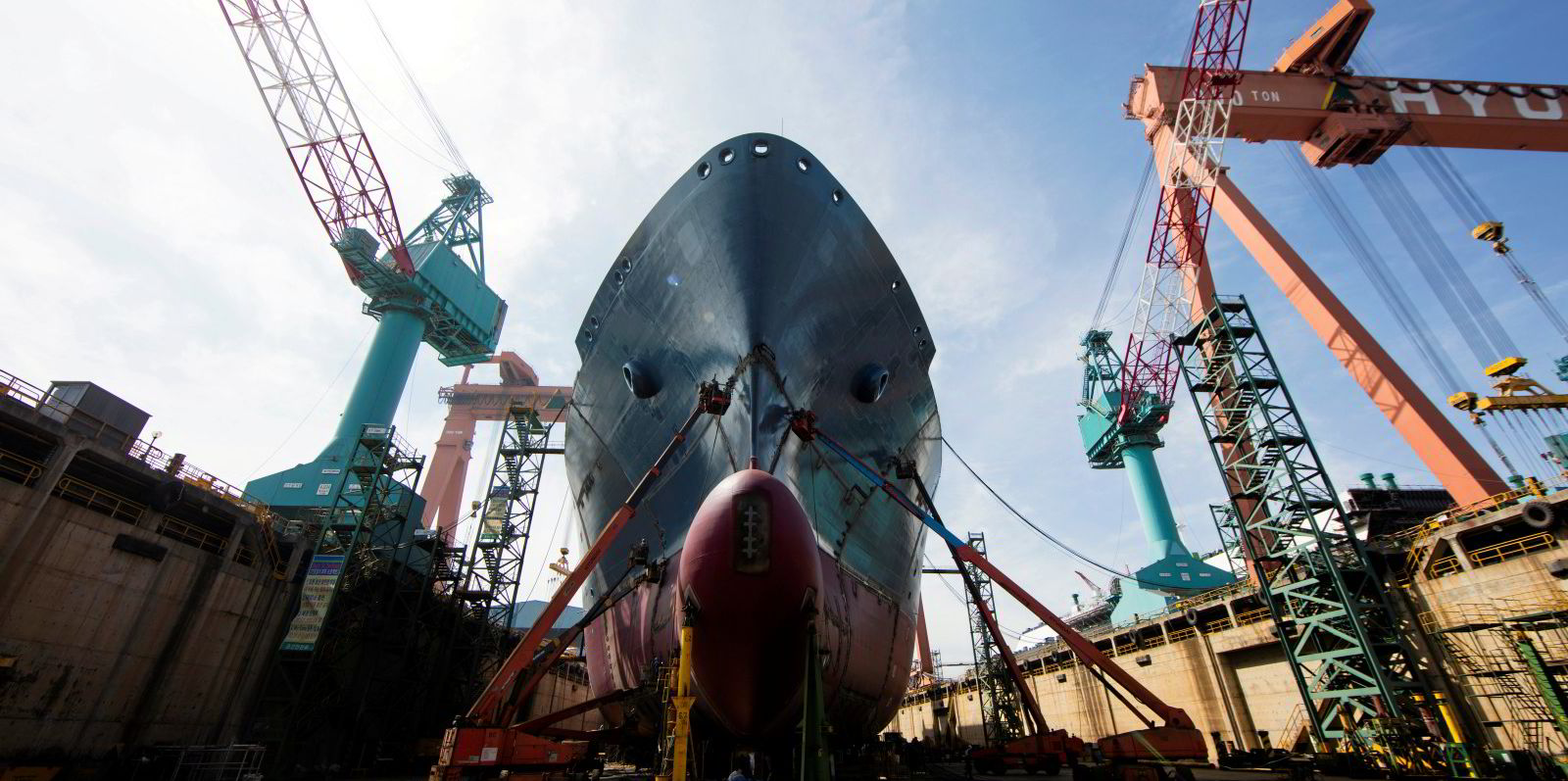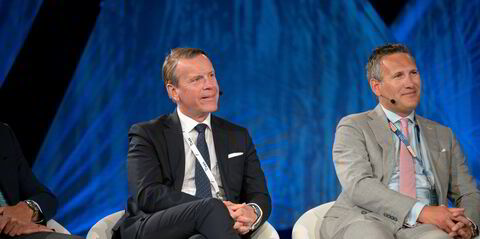There is a jigsaw on the table in front of Hoegh LNG president and chief executive Erik Nyheim and an image of it on the wall behind him.
The Norwegian floating storage and regasification unit owner is transforming into what Nyheim describes as a marine energy infrastructure company with a dive into floating carbon capture and storage (CCS) and ammonia, and it has an eye on hydrogen.
But there are several moving — or should that be floating — parts, hence the puzzle to explain the connections.
Nyheim has been in the hot seat for just over a year. Between signing up for the top job and formally joining the company in August 2022, everything changed, catapulting him into a steep learning curve on LNG when three of the company’s FSRUs were snapped up at lightning speed to serve Germany as Russian pipeline gas shut down.
With Europe focused on energy security, Hoegh had to put its move into clean energies on hold, but now it is firmly back on the agenda.
Speaking to TradeWinds at Gastech 2023 in Singapore, Nyheim talked through some of the new breeds of floating assets and solutions his company is working on.
This month, Hoegh announced its tie-up with North Sea oil and gas company Aker BP on CCS in northern Europe, in which it will advance the development of a scalable floating CO2 storage unit or FCSO, along with low-pressure liquefied CO2 carriers to support it.
Nyheim said: “I think it is dawning on people and countries that CCS has to be part of a bigger solution.”
He highlights the large volumes of CO2 just in Europe that will need to be removed, but admits it is hard to tell yet how this business will develop. “That’s why we think the scalability, flexibility is important.”
In another piece of the transition puzzle, Hoegh LNG is looking at floating ammonia terminals.
Together with Wartsila, it has secured a grant of almost €6m ($6.4m) from the Norwegian government through Innovation Norway and is building a pilot model of an ammonia cracker in a test centre that could be installed on a floating unit.
Nyheim said the project partners aim to take a final investment decision on building a full-size project in 2024 and 2025. The target is to develop floating terminals that can receive ammonia and then crack it into hydrogen.
This would essentially provide an FSRU for ammonia that delivers hydrogen instead of natural gas.
In addition, Hoegh is looking at producing blue hydrogen from LNG.
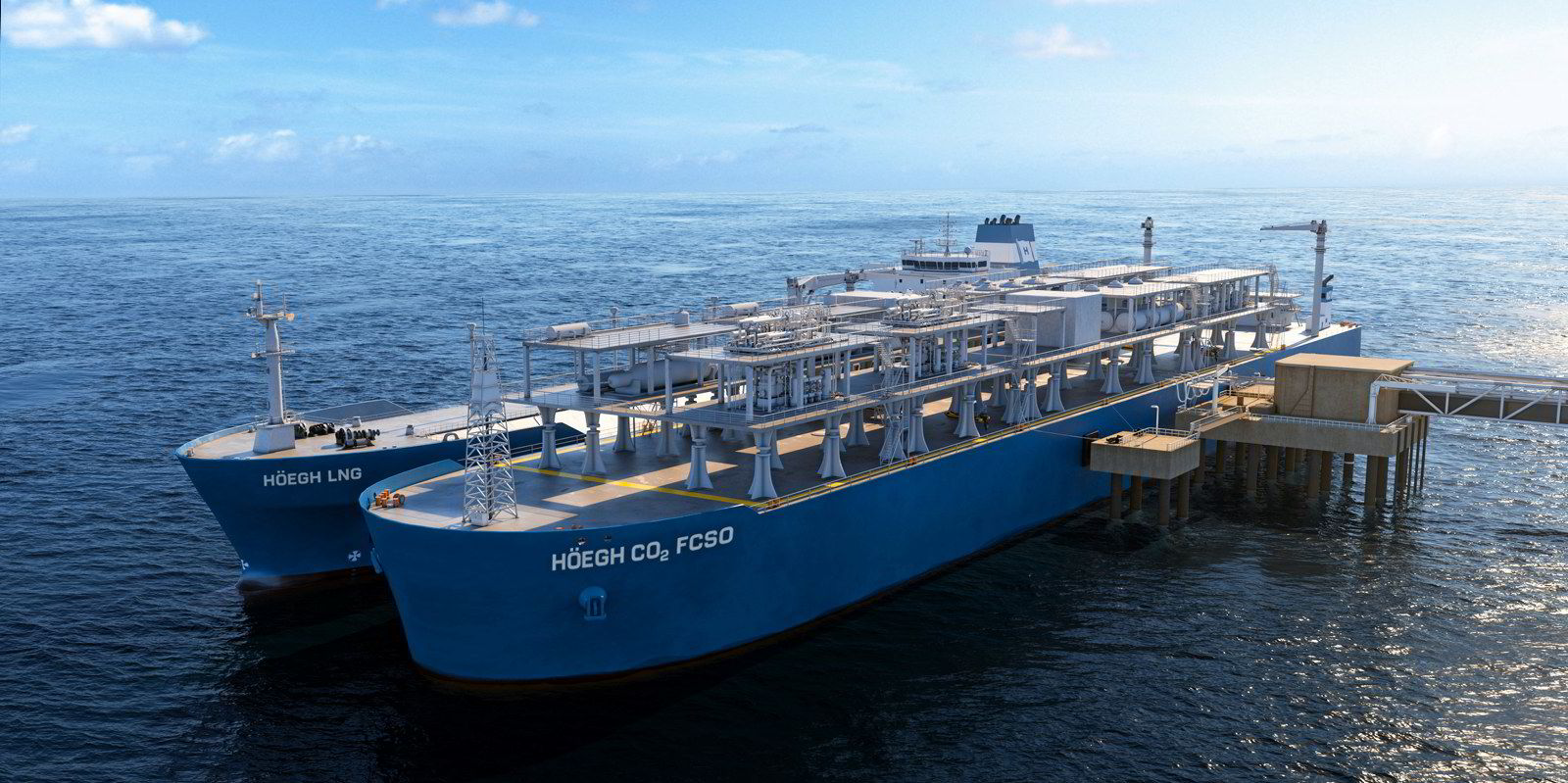
Nyheim said the company is looking at all the new solutions as an energy hub concept in which the FSRU can provide the gas but then this can be complemented with ammonia terminals or even blue hydrogen production from the LNG, while using CCS to capture the CO2.
“LNG will be needed for another few decades in Europe at least,” he added, but there will be a transition where hydrogen and ammonia volumes will grow with this. “Transition means it will take time.”
Hoegh has already sent up a new clean energy division within the company headed up by internal hire Nils Jakob Hasle, who overlooks the ammonia and hydrogen business. It is recruiting for this and will also work through partnerships.
Nyheim revealed that the company has already had talks with yards on its CCS business, but added: “We don’t have to own and operate everything.”
Committed
This new arm will be integrated into Hoegh’s existing FSRU business. He stressed that the company remains committed to this, recently buying a secondhand LNG carrier as a possible conversion candidate.
Hoegh, which is planning to put the first net zero carbon FSRU into operation by 2030, will continue to bid on tenders for new units but will not build FSRUs speculatively, he said.
Nyheim, who has a 20-year background in shipping, first with Wallenius Wilhelmsen and later with Boston Consulting Group, described 2022’s rush for FSRUs as “very intense”.
By the end of last year, half of Hoegh LNG’s regas fleet of 10 ships had either moved to or been committed to import projects in Europe, three in very fast-tracked operations.
“If you could put that type of urgency into the energy transition, we think that could happen faster than what we’re seeing right now,” he said.
While admitting that the pace of FSRU business has slowed, Nyheim said the company still sees a need for more regas capacity, pointing to the volume of coal that needs to be replaced with cleaner fuels in Asia and Europe.
He said LNG has gone from a “nice-to-have thing” to being a core part of the energy system in Europe.
“I think gas serves a very important purpose also as a decarbonisation energy,” he said.
Fast-paced
Nyheim admits to having something of a strategic mindset, which he said is proving useful when building up a company, adding that the people side of the business and the whole organisational dynamic are really important to him.
He said Hoegh is also trying to ramp up its external perspective and spend more time with its customers as partnerships will be key when developing its new clean energy floating solutions.
Nyheim said the pace of business feels really fast.
It does not sound much quieter outside work, where he spends his downtime with his three active sons, aged 10, 15 and 17, skiing in winter and boating in the summer.
He has also managed to get his whole family to play golf, and although he politely declines to reveal his handicap, he said it is a good thing to do together as a family.
